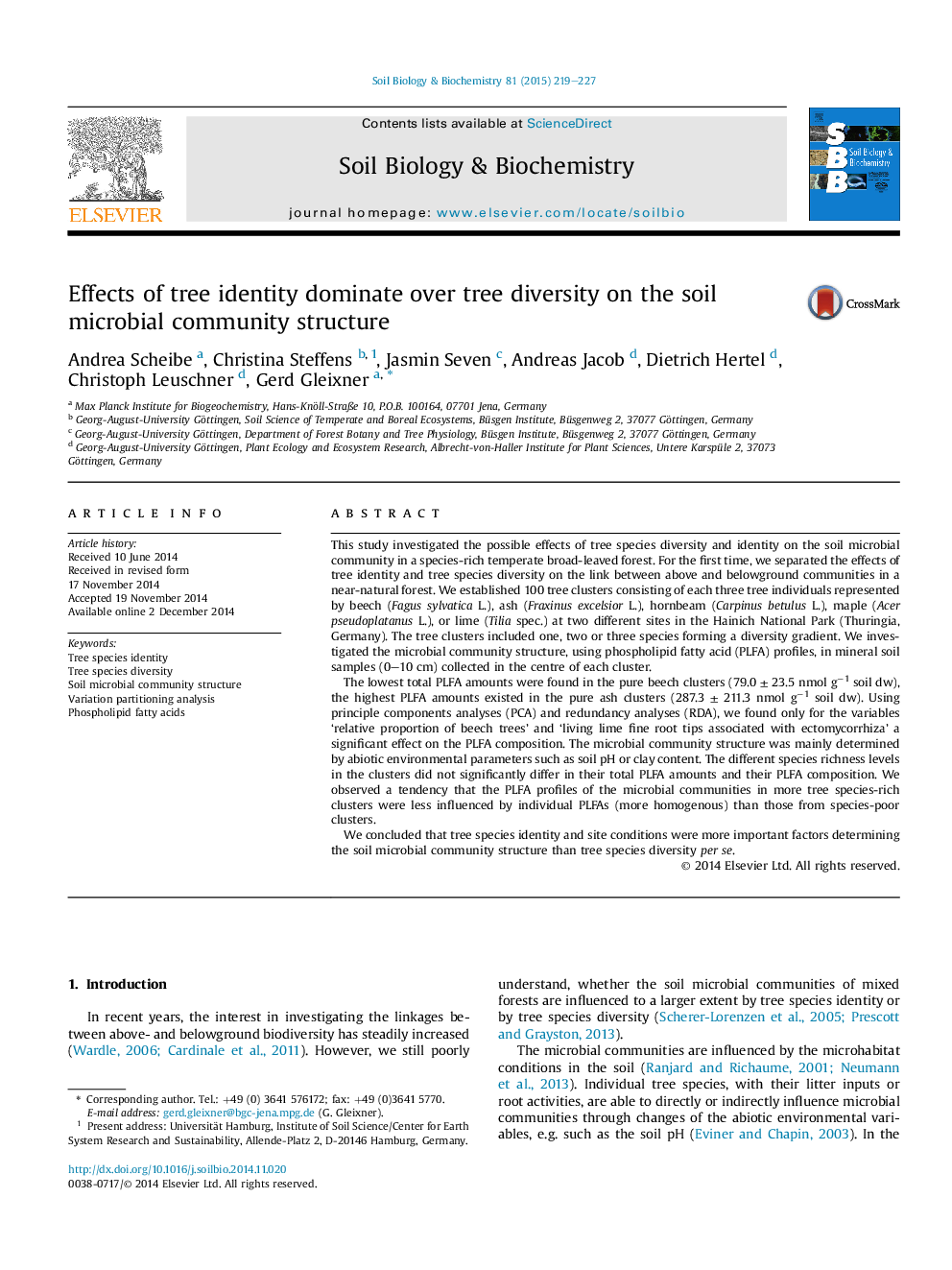| Article ID | Journal | Published Year | Pages | File Type |
|---|---|---|---|---|
| 2024432 | Soil Biology and Biochemistry | 2015 | 9 Pages |
•Tree identity effects dominate tree diversity effects on the soil microbial community.•Most changes in the microbial community structure were explained by abiotic factors.•Tree diversity might contribute to a more balanced microbial community.
This study investigated the possible effects of tree species diversity and identity on the soil microbial community in a species-rich temperate broad-leaved forest. For the first time, we separated the effects of tree identity and tree species diversity on the link between above and belowground communities in a near-natural forest. We established 100 tree clusters consisting of each three tree individuals represented by beech (Fagus sylvatica L.), ash (Fraxinus excelsior L.), hornbeam (Carpinus betulus L.), maple (Acer pseudoplatanus L.), or lime (Tilia spec.) at two different sites in the Hainich National Park (Thuringia, Germany). The tree clusters included one, two or three species forming a diversity gradient. We investigated the microbial community structure, using phospholipid fatty acid (PLFA) profiles, in mineral soil samples (0–10 cm) collected in the centre of each cluster.The lowest total PLFA amounts were found in the pure beech clusters (79.0 ± 23.5 nmol g−1 soil dw), the highest PLFA amounts existed in the pure ash clusters (287.3 ± 211.3 nmol g−1 soil dw). Using principle components analyses (PCA) and redundancy analyses (RDA), we found only for the variables ‘relative proportion of beech trees’ and ‘living lime fine root tips associated with ectomycorrhiza’ a significant effect on the PLFA composition. The microbial community structure was mainly determined by abiotic environmental parameters such as soil pH or clay content. The different species richness levels in the clusters did not significantly differ in their total PLFA amounts and their PLFA composition. We observed a tendency that the PLFA profiles of the microbial communities in more tree species-rich clusters were less influenced by individual PLFAs (more homogenous) than those from species-poor clusters.We concluded that tree species identity and site conditions were more important factors determining the soil microbial community structure than tree species diversity per se.
Graphical abstractFigure optionsDownload full-size imageDownload as PowerPoint slide
